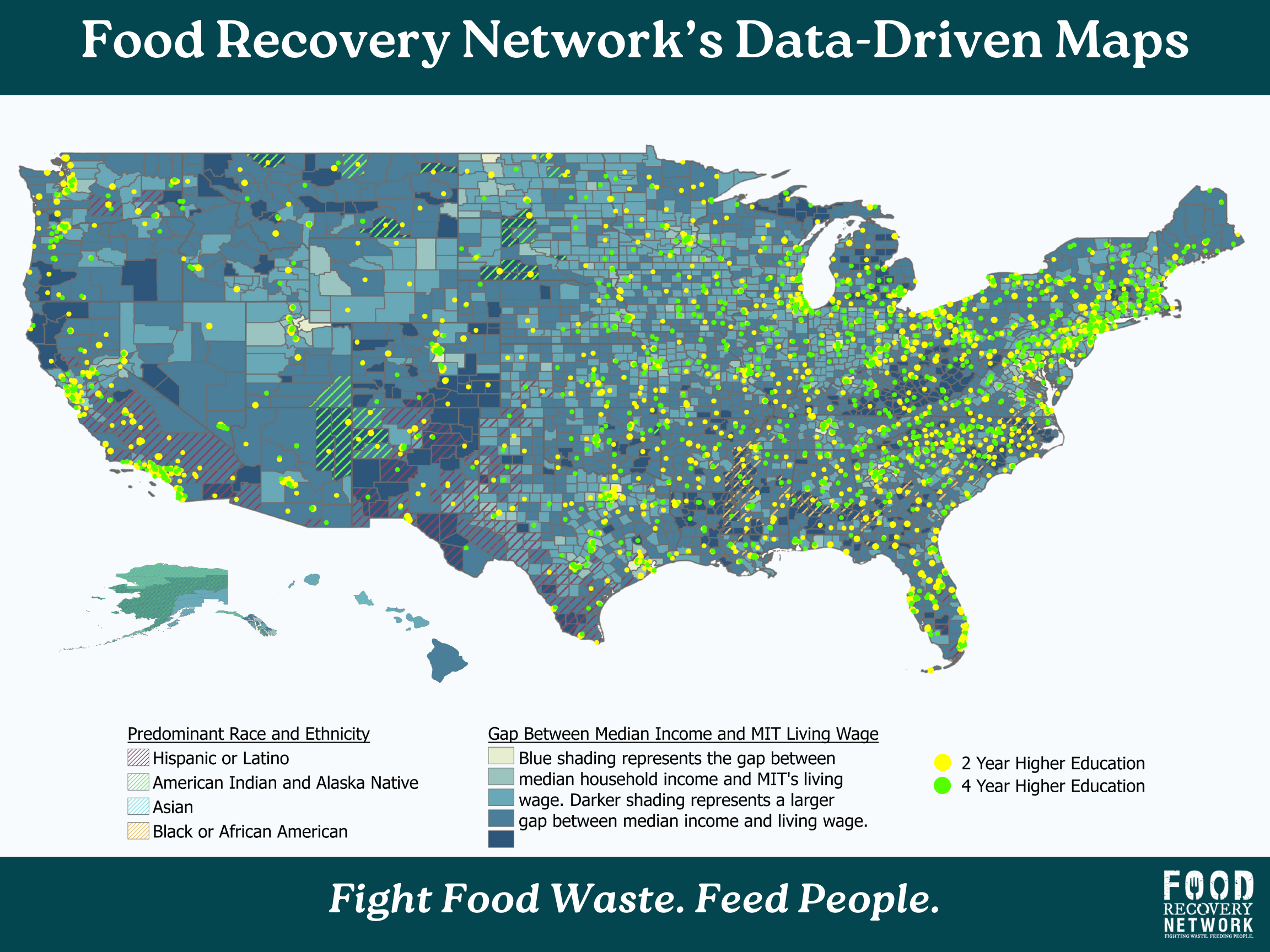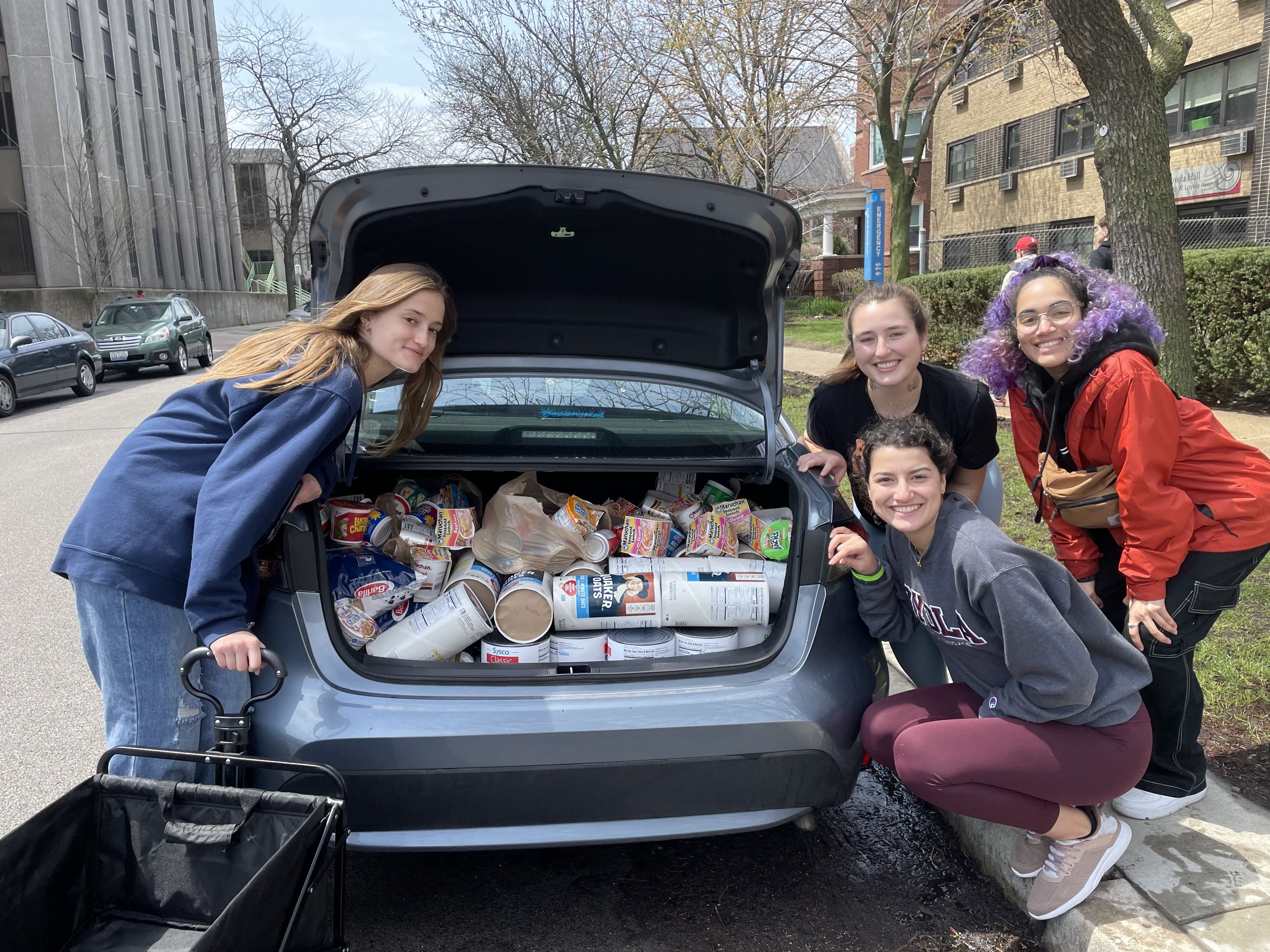Four years ago when I began my position as the inaugural Chief Operating Officer (COO) at FRN, I was delighted. I came to the organization shortly after I completed my Results Count fellowship with The Annie E. Casey Foundation. My fellowship experience equipped me to use data to bring a cohesive vision across the programmatic, communications, and operational function areas I oversee. To learn how this work started, evolved, and how it influences our daily operations and future planning, please watch our mapping webinar, How FRN’s Data is Driving Impact.
Through combining and analyzing six different data sets, here is what I learned about FRN’s work and how we can increase our impact:
Community colleges are the key to our growth. It is more often community colleges, rather than four-year institutions, that are geographically located in the areas with both the most surplus food as well as the most people experiencing hunger. To help expand into community colleges, we have launched a new grant program to bring our food recovery model to neighborhoods across the U.S. Click here to learn more and apply.
FRN must implement our programs in the areas of the most need. We believe each state presents an opportunity to reduce food waste, feed people, and fight climate change. By mobilizing 200+ college student-led chapters to recover perishable food that would otherwise go to waste from their campuses and communities and donating it to local nonprofits who feed people experiencing hunger, we have created one of the largest college student-led networks fighting food waste and hunger in the U.S. With our ability to quickly replicate in any area where a four-year higher institution is present, we created a list of all 50 states and the specific area we would start a chapter, within each state, in order to feed more people of the most need, faster.
The areas listed below were prioritized using a variety of factors including, but not limited to: number of higher education institutions in a given area who generate surplus food (NCES, EPA), greatest need as defined by the difference between the median wage (U.S. Census) and living wage (MIT), number of people experiencing food insecurity (Feeding America), SNAP, food insecurity, and poverty rates (U.S. Census), presence of higher education institutions (NCES), and areas where the population is predominantly people of color (U.S. Census).
States listed below are in alphabetical order.
If you are interested in hosting a Lunch and Learn for your organization to see your individual area, please contact programs@foodrecoverynetwork.org.























